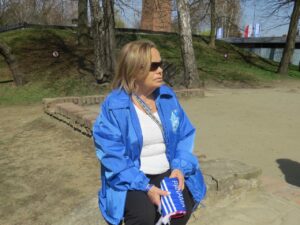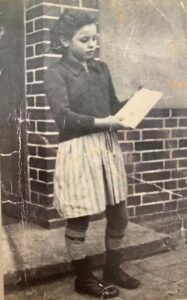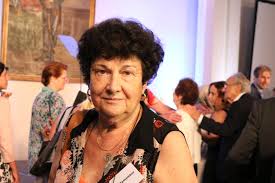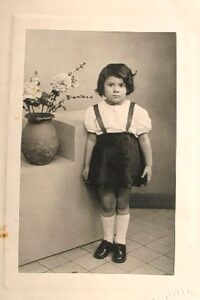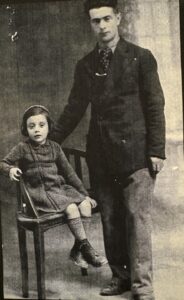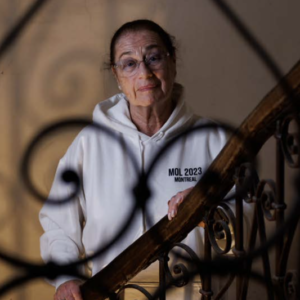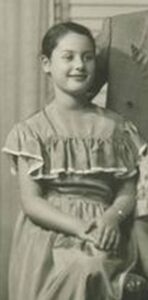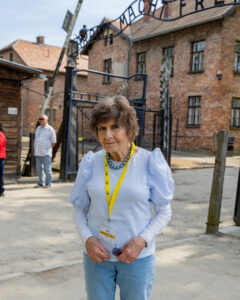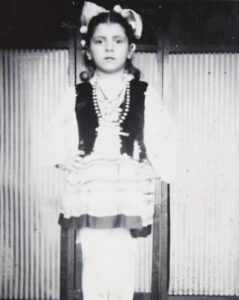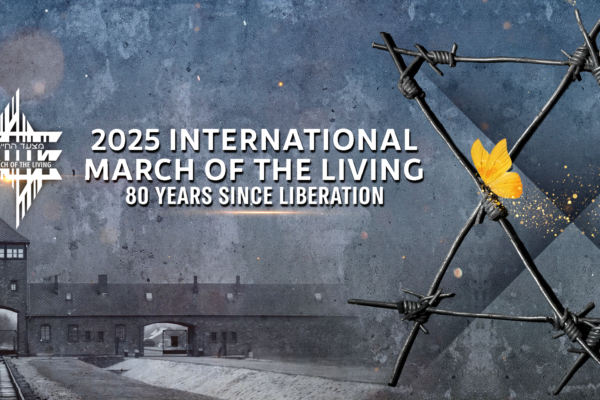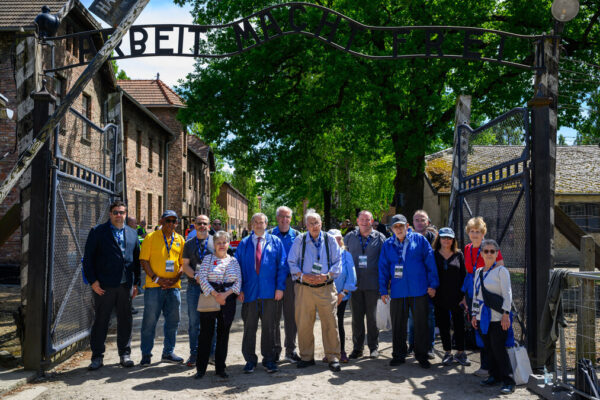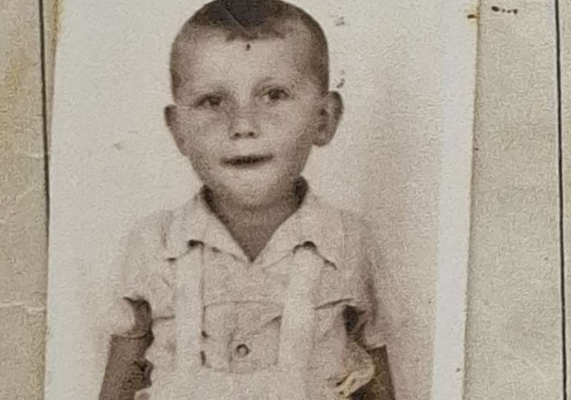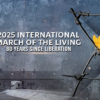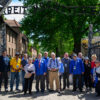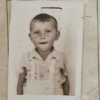
Yad Vashem Holocaust Memorial Avenue of the Righteous Among the Nations
On April 24, 2025— On Yom HaShoah, Holocaust Remembrance Day, as thousands of participants prepare to walk the solemn path from Auschwitz to Birkenau during the 2025 March of the Living, a remarkable group of individuals will join them—men and women who survived the Holocaust because of the rare, extraordinary courage of strangers. These are survivors who, as children, were hidden in cellars, attics, convents, farms, and forests. Some were smuggled out of ghettos in baskets or given new identities. Others were passed hand to hand by desperate parents into the arms of gentiles who said “yes” when most turned away.
Each of these survivors was saved by someone honoured as Righteous Among the Nations, the highest recognition bestowed by the State of Israel on non-Jews who risked their lives to protect Jews during the Holocaust. These rescuers acted not out of the hope for monetary reward but out of conscience, defying orders, laws, and fear to preserve human life.
Now, 80 years after the liberation of the Nazi death camps, these survivors return to the sites of their most significant loss and most haunting memories. For many, it is not their first March. But this year’s anniversary brings new urgency. Fewer survivors are able to travel each year. Yet those who participate march with a renewed sense of purpose. They walk in honor of those who saved them. In memory of those who didn’t survive. And in testimony to the generations that follow, reminding the world that silence is dangerous—and that courage, even from the few, can change the course of history.
These are some of their stories and voices. This year, as they walk the same ground where millions perished, they are joined by thousands of young people determined to carry the truth forward.
Panos Macheras, a Greek doctor and member of the resistance, warned a young Jewish family in Athens that danger was coming. With his help, they assumed Christian identities and hid in silence until liberation. Among them was an infant named Benjamin Albalas, who would survive while hundreds of others were rounded up from their synagogue and never returned. Today, he leads Holocaust education in Greece, urging young people to preserve the truth. “Keep your Jewish identity,” he says. “Don’t forget what happened to your parents, and your grandparents and your people during the Holocaust.”
After being rounded up for deportation with her mother in the Warsaw Ghetto, a cousin ran alongside the cattle car, claiming the child inside as her own. That child was Eva Kuper, who was passed hand-to-hand to safety. Eva and her father escaped from the ghetto through the sewers. “I was placed in the care of Hanka Rembowska. When Hanka became too sick to care for me, she asked Sister Klara, who belonged to an order that took care of blind children, to take me under her care. I spent the rest of the war years in hiding with the nuns in a farmhouse in the south of Poland.” Eva did not find out she was Jewish until she boarded a ship to Canada.
In December 1940, 7-year-old Mania Hudy, her mother and her brother Sammy were forced into the Warsaw Ghetto where her baby sister Bronka was born. Eight days later, her mother handed her to a nun, whispering that it was her only chance. “I was too young to understand, but now I know it was the purest act of love.” For two years, Mania’s mother found shelter for the two children with a non-Jewish Polish couple until they were arrested and sent to Bergen-Belsen. When the war ended, Mania and her brother reunited with their parents and eventually with her younger sister. “It was the day our family was whole again.”
She was only six months old when her parents smuggled her out of the Warsaw Ghetto, placing her on her aunt’s doorstep. Rosa Rotenberg eventually ended up in a Catholic orphanage until her father—one of the few survivors—found her years later. She grew up in Paris and then Argentina, constantly haunted by a mother she never knew. “I don’t have a single photo of my mother. I don’t remember her face, her hands, or her eyes.”
On a quiet farm in France, a little girl was hidden under a mattress as Nazi soldiers searched the house. That girl was Rosette Goldstein, who survived by living under the protection of a farming family with three daughters. “Monsieur and Madame Martin and the girls were very good to me. I was very lucky.” After the war, she reunited with her mother and became a staunch advocate for Holocaust education. She remembers every moment like it was yesterday. “Many times, the Nazis came to the farm. Once, I was hidden under a mattress; another time in a hayloft.”
“Lovingly they gave me life, and lovingly they saved my life,” recalling the time she was hidden in Kovno, Lithuania. Her parents secured her place with a gentile family by helping them buy a farm—Aviva Ptack, just an infant, went with them. Her biological parents were later murdered in the Kovno Ghetto, and she only discovered her true identity years later, before her wedding. Now known as Aviva Ptack, she speaks to students across Canada, hoping her story resonates. “I want to try to reach some young people who might be able to make a difference in this crazy world we live in.”
She was four when she first learned to lie about who she was. After her father was taken to a camp, Barbara Frankiss and her mother were smuggled out of the Warsaw Ghetto—but her mother was later shot before her eyes. Barbara hid behind wardrobes, rode trams alone, and survived a Gestapo interrogation by posing as a Catholic child named Maria. A brave policeman, Antoni Nowacki, and his wife brought Barbara to their home and treated her as their daughter. “I told them about my background, including the names of my parents and the fact that I was Jewish. She and her husband kept me with them throughout the war despite that.”
On April 24, 2025—Yom HaShoah, Holocaust Remembrance Day—these survivors will walk once more in the March of the Living. They walk not just for themselves but for the millions who cannot. They walk for truth, for justice, and for the future. And with every step, they remind us that even in history’s darkest moments, there were those who chose light.
In honor of the Righteous among the Nations, Diana and Pastor John Hagee, Directors of Christians United for Israel, will be lighting a torch at the ceremony in Auschwitz-Birkenau on Holocaust Remembrance Day.
 “Throughout history, the Jewish people have faced unimaginable darkness, yet they have never stood alone, and they never will. The sanctity of life is a sacred truth, one that transcends time, faith, and borders. When the world turned its back, there were those who stood firm. There were those who defended life, upheld righteousness, and refused to be indifferent in the face of evil. We are proud to stand beside Holocaust survivors who were saved by the courage of the Righteous Among the Nations. You are living testaments to the power of faith, resilience, and the unwavering bond between those who choose good over evil. Today, as then, we stand with the Jewish people, and we stand with Israel. You will never be alone.”
“Throughout history, the Jewish people have faced unimaginable darkness, yet they have never stood alone, and they never will. The sanctity of life is a sacred truth, one that transcends time, faith, and borders. When the world turned its back, there were those who stood firm. There were those who defended life, upheld righteousness, and refused to be indifferent in the face of evil. We are proud to stand beside Holocaust survivors who were saved by the courage of the Righteous Among the Nations. You are living testaments to the power of faith, resilience, and the unwavering bond between those who choose good over evil. Today, as then, we stand with the Jewish people, and we stand with Israel. You will never be alone.”
-Pastor John Hagee, Director, Christians United for Israel.
